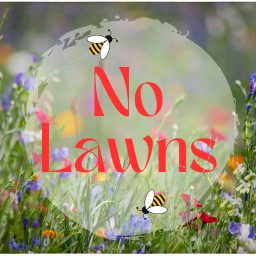Got all the plants and trees in yesterday, got most of the trees in the ground. Couldn’t figure out where 2 of them should go so I’ll be doing those by hand later.
These are mostly mocked up so I can figure out where to plant them. Let me know your thoughts.
A lot of overgrowth, other things to clean up in the background. Wood chips are next and then next year we’ll do it all over again until it’s fully covered!
Looks like I can only upload one picture with the post so I’ll throw more in the comments.


I did this starting about 5 years ago (still adding and iterating)! Trust me, before long you’re going to be going outside all the time just to be in it, and it’ll fill you with happiness just looking at it from inside. It’ll change your life.
A quick note for your woodchip addition. First, I would “plant the rain” as Brad Lancaster talks about in his books Rainwater Harvesting for Drylands and Beyond [1]. Basically, you do small earthworks in the yard to promote water harvesting and infiltration. This is much easier to do with bare ground. Once you’ve done that bottom layer, I’d strongly recommend laying down contractor’s paper aka builder’s paper [2] and covering that with about 4" (10cm) of woodchips. This paper, which is basically like a huge roll of the same kind of paper from paper grocery bags, will prevent grass from coming up and taking over. Some people use cardboard, which I find extremely tedious to tear down, remove plastic, and lay on the ground in any meaningful quantity. It flops around and won’t stay put when adding the woodchips and it’s really annoying. You should overlap the paper at the edges so grass doesn’t sneak through.
What else are you going to plant? I strongly suggest going wild with locally-appropriate nitrogen fixers, especially those that bear fruit.
Notes:
Hey thank you so much for suggesting the paper rolls over cardboard!! I’m definitely going to go that route now, cardboard is such a hassle!
I have no idea what is next honestly, aside from a few more redwoods. This first step is to hopefully build a skeleton for a canopy. Next steps are going to be ground cover, and I will absolutely look into nutrient blends, I hadn’t even thought of it either. Fruit trees are in the plan, was thinking of some pawpaw trees. But everything is going to be native 100% to include the ground cover plants.
Can you post some pics of your setup? I’d love to see it.
Excellent! Heavy mulch + diverse living ground cover is a powerful combination. In my yard you can see the difference between locally-appropriate “native” plants and those that aren’t, as the former just grow and grow, and the latter struggle and require tons of babysitting. I’m slowly letting them die to open up space for plants that actually want to live here. Lesson learned.
When choosing fruit trees, please consider local diseases. For example in the beginning I bought an apple tree from a local nursery, not knowing it was susceptible to fireblight (prevalent in my area). Lo and behold, this year we’ve had lots of rain and that tree is dying from fireblight (I’ve removed the dying parts and will just cut the whole thing down in winter). Starting around 2019 or 2020 I began planting apples and pears that are naturally resistant to fireblight and they’re doing great. So, call some local arborists and ask which fruit tree diseases are prevalent in your area. Skim the wikipedia pages for those diseases to get a sense of what they are, and then look exclusively for trees that are resistant to those diseases. Spend 2 hours to save 2 years (and money too)!
I ate a pawpaw once and it was incredible. They need a lot of shade when young, and unfortunately don’t seem to grow well in my area.
Sorry but I’m not ready to post pics of my place yet, too shy for that.
Oh yeah we’re working with an arborist. So we’ve had to cut down 3 apple trees that were grown before we moved here. They were pretty huge and not taken care of, and had Apple scab that we couldn’t get under control.
There’s a crab apple here too that is slowly dying from the same thing. That will eventually get replaced as well.
It’s crazy how resistant native plants and trees are to these diseases. That’s a big motivator to keep it local.
I’ve never had a pawpaw fruit but from what I’ve read about them I’m willing to grow a few. Our yard has plenty of shade with more to come so we should be able to get them going in the back at least.